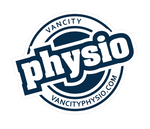Have you ever felt a persistent ache at the front of your knee, especially when climbing stairs, running, or even just sitting for too long? You might be experiencing Patellofemoral Pain Syndrome (PFPS), often known as "runner's knee" or "jumper's knee." It's a remarkably common source of knee discomfort, affecting athletes and non-athletes alike, and it's a condition we at VanCity Physio deeply understand.
Many people, eager to embrace new exercise routines or push their limits, might inadvertently set themselves up for this pain without proper preparation. A sudden increase in activity, coupled with underlying issues like poor lower limb mechanics or a weak core, can put excess stress on your knees, making you susceptible to PFPS.
What is Patellofemoral Pain Syndrome?
PFPS is an umbrella term for pain that occurs in and around your patella (kneecap). This pain is typically felt in the front of the knee and often worsens with movements that involve significant knee bending and weight-bearing. You might notice it particularly during activities such as:
-
Jogging or running
-
Squatting
-
Climbing or descending stairs
-
Cycling
-
Even prolonged sitting with bent knees
What Causes Patellofemoral Pain?
The knee joint is a complex synovial hinge joint, allowing for bending and extension with minimal side-to-side motion, supported by bones, cartilage, ligaments, and tendons. Pain develops when this joint becomes inflamed or irritated. While often attributed to vigorous overuse, several factors can contribute to PFPS:
-
Overuse and Training Errors: Suddenly changing or increasing the intensity or amount of physical activity puts excess stress on the knee.
-
Poor Biomechanics: Issues like poor lower limb mechanics or a weak core can alter how the kneecap tracks, leading to irritation.
-
Equipment and Footwear: Using inappropriate equipment or footwear can also contribute to PFPS.
-
Incorrect Patella Alignment: The kneecap might not be moving correctly in its groove on the thigh bone.
Your First Steps: Self-Care and When to Seek Help
If you're experiencing pain around your kneecap, your immediate action should be to stop or modify the activities that are causing the pain until you feel better. While it's important to keep the joint moving as pain allows, you might need to temporarily switch to lower-impact exercises.
For short-term relief, you can also use the POLICE method:
-
Protect: Avoid making the painful knee worse by pausing aggravating activities.
-
Optimal Loading: Keep the joint moving within a pain-free range; avoid complete immobilization.
-
Ice: Apply cold packs to the affected area for 20 minutes, two to three times per day.
-
Compression: A knee bandage can help manage swelling (your physiotherapist can advise on the best type).
-
Elevate: Whenever possible, rest with your knee supported in a position higher than your heart.
While these strategies can offer temporary relief, they are not a permanent fix. If your knee pain persists after a few days of self-treatment, it's crucial to see a physiotherapist. Early intervention can significantly minimize the risk of chronic pain.
Ready to begin your recovery journey? Book an appointment with one of VanCity Physio’s Knee Specialists.
How Physiotherapy Treats Patellofemoral Pain
At VanCity Physio, our approach goes beyond just treating symptoms. We focus on identifying and addressing the root cause of your patellofemoral pain. Our experienced physiotherapists will conduct a thorough assessment to understand your unique situation, examining your movement patterns, strength, stability, and pinpointing the exact source of your pain.
Based on our findings, your personalized treatment plan may include:
-
Targeted Exercises: Extensive research shows that strengthening hip muscles can significantly improve function and reduce pain. We’ll prescribe specific exercises to strengthen not only your hips but also your quadriceps, hamstrings, and other muscles vital for knee stability.
-
Manual Therapy & Soft Tissue Techniques: Our hands-on approaches, such as soft tissue mobilizations, soft tissue release, and deep tendon friction massage, can help reduce pain and restore motion.
-
Advanced Modalities: We may incorporate techniques like IMS/dry needling or Shockwave Therapy to address trigger points and promote healing.
-
Movement Feedback & Retraining: For runners or athletes, movement feedback interventions, sometimes provided on a treadmill, with cues and modifications to running patterns, can alleviate symptoms during activity.
-
Taping & Support: We can advise on whether specific bandages, taping (like patella tracking techniques), or support equipment are right for you to help manage pain and improve alignment.
-
Patient Education: A key part of your recovery is understanding your condition. We'll educate you on proper body mechanics, advise on appropriate footwear and equipment, guide you on home exercises, and discuss how to modify your training regime to prevent recurrence. We also provide guidance on managing pain at home, including proper icing/heating techniques and optimal knee positioning.
It's important to remember that while physiotherapy provides significant help, the body still requires natural healing time. We'll work with you to set realistic goals and timelines for your recovery.
While Patellofemoral Pain Syndrome is a distinct and common knee issue, it's just one piece of the puzzle when it comes to comprehensive knee health. The knee is susceptible to a wide range of concerns, from chronic pain to acute injuries. If you're interested in learning more about other significant knee injuries, such as sudden ligament tears like those affecting the ACL, and their detailed rehabilitation, we encourage you to explore our Comprehensive Guide to ACL Injuries and Physiotherapy. No matter the nature of your knee pain, VanCity Physio is equipped to provide expert assessment and personalized care.
Preventing PFPS: Staying Ahead of the Pain
The best way to manage Patellofemoral Pain Syndrome is often to prevent it. Here are key strategies to reduce your chances of injury:
-
Gradual Progression: Introduce new training regimes or changes in activity slowly. Seek physiotherapist advice on creating a sustainable activity plan.
-
Proper Equipment & Footwear: Get expert guidance to ensure your footwear is appropriate and supportive, and that you're using any exercise equipment correctly.
-
Maintain a Healthy Weight: Avoiding excess weight reduces strain on your knees.
-
Warm Up Thoroughly: Always warm up effectively before exercising.
-
Stretch: Include stretches for your quadriceps and hamstrings before and after exercise.
-
Listen to Your Body: Don’t push through pain. If your knee or anything else starts to hurt during exercise, stop and consult with us.
Ready to Get Back to a Pain-Free Life?
Don't let patellofemoral pain hold you back from the activities you love. Our team, including experienced physiotherapists like Ranko Vukovic (MPT, BHK), who specializes in kinesiology, functional movement, and Shockwave Therapy, is dedicated to helping you achieve your rehabilitation goals.
We'll provide a comprehensive and individualized treatment plan to get you back on track. Your journey to a pain-free knee starts with understanding, proactive care, and expert guidance.
Contact VanCity Physio today to book your consultation and take the first step towards conquering your patellofemoral pain!


